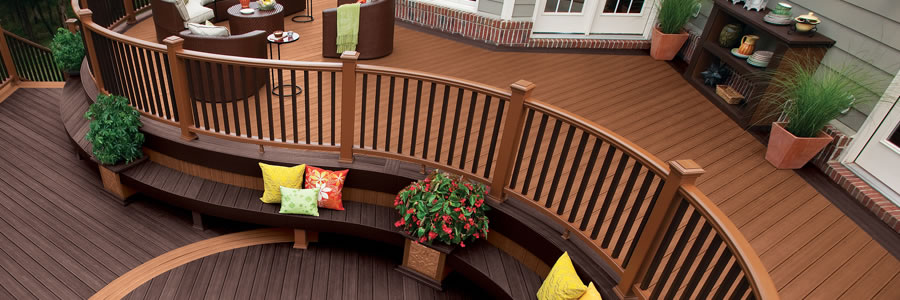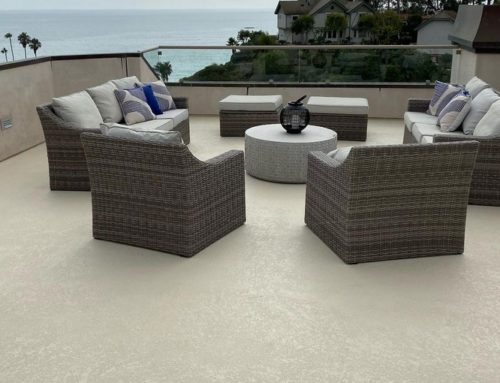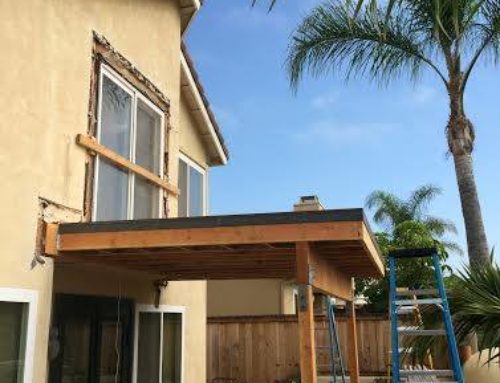Building a deck using composite decking materials requires special deck carpentry techniques to ensure a flawless finish and long-lasting structure. Composite decking offers durability, low maintenance, and aesthetic appeal you don’t find with natural wood. However, working with these materials differs from traditional wood. Crank Waterproofing, Decking, and Roofing knows how to work with composites like Trex. Keep reading to learn their pro deck carpentry tips for working with composites.
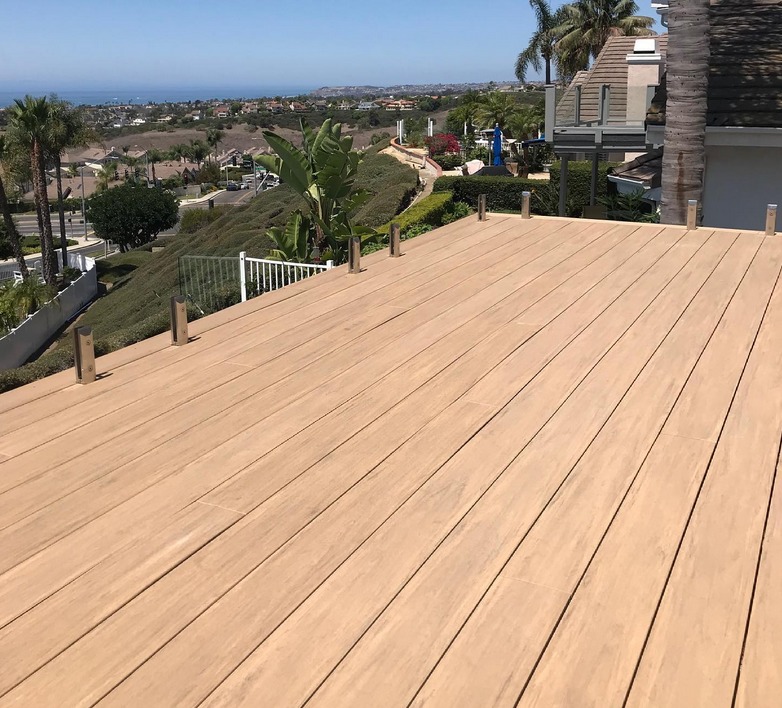
Spaced right in Newport Beach
Plan for Composite Expansion and Contraction
Composite decking materials expand and contract as the temperature changes. Plan for this by allowing for adequate space between boards during installation. Most manufacturers provide guidelines for spacing based on the outdoor temperature at the time of installation. For example, if you install the decking in colder weather, leave a larger gap to handle summer expansion. This tip prevents buckling and ensures a smooth surface year-round.
Additionally, plan for expansion and contraction where the decking meets walls or other structures. Using a spacer tool helps maintain consistent gaps and gives your project a polished look.
Use the Right Fasteners
Choosing the appropriate fasteners is crucial when working with composite decking. Many manufacturers recommend hidden fasteners designed specifically for their products. Hidden fasteners provide a clean finish by eliminating visible screws on the deck surface. They keep boards secure while allowing movement during expansion and contraction.
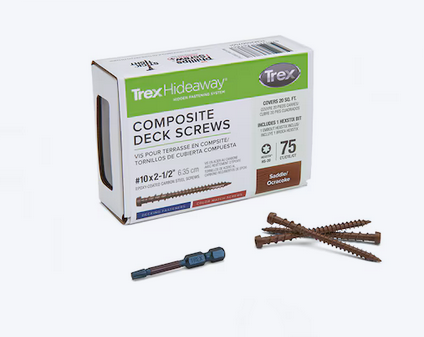
If you prefer traditional screws, make sure to use composite deck screws. These screws feature a special design that prevents the material from mushrooming around the hole. Some manufacturers even offer screws in the same color as their boards. Always pre-drill the holes if you’re not using self-tapping screws. This pro tip minimizes the risk of splitting your composite material and ensures a smooth finish.
Use the Right Blade
Composite decking materials require proper cutting tools for clean, precise edges. Use carbide-tipped blades designed for cutting composite or PVC decking. These blades reduce chipping and splintering that damages the boards. Avoid using dull blades. Dull blades tear and chew the composite rather than making a clean cut.
For curved cuts, consider using a jigsaw with a fine-tooth blade. As always, measure twice and cut once.
Plan for Extra Weight
While composite decking is strong and durable, it weighs more than traditional wood. Proper support for the deck frame is essential to handle the additional weight. Ensure joists are spaced according to the manufacturer’s recommendations, typically 12 inches apart for composite materials. Wider spacing may lead to sagging or bowing over time.
When installing stairs or elevated decks, use additional bracing to provide extra support. Double-check the local building codes to confirm your structure meets safety standards and can withstand the deck’s load requirements.
Clean as You Build
Composite decking materials collect, dirt, and adhesive residue during construction. Cleaning as you build prevents stubborn stains and ensures the deck looks its best upon completion. Use a soft-bristle brush or a microfiber cloth to remove debris from the surface.
Avoid using abrasive tools or harsh chemicals, as they can damage the composite material’s finish. A simple solution of warm water and mild soap cleans well. Keeping the deck clean during construction also helps identify any scratches or damage that requires touch-ups before the project is complete.
Bonus Deck Carpentry Tip: Follow Manufacturer Guidelines
Manufacturers of composite decking provide specific instructions and guidelines for working with their products. Carefully read and follow these recommendations to ensure your deck’s longevity and maintain the warranty. Follow the manufacturer’s recommendations for fasteners, spacing, cleaning methods, and even the best tools for cutting their materials.
The Top Deck Carpentry Trick
The number one deck carpentry trick to build the best composite deck in Orange County is to simply hire Crank Waterproofing, Decking, and Roofing.
Orange County trusts Crank now and has trusted Crank for 80 years. Get the best build when Cranks builds for you.



